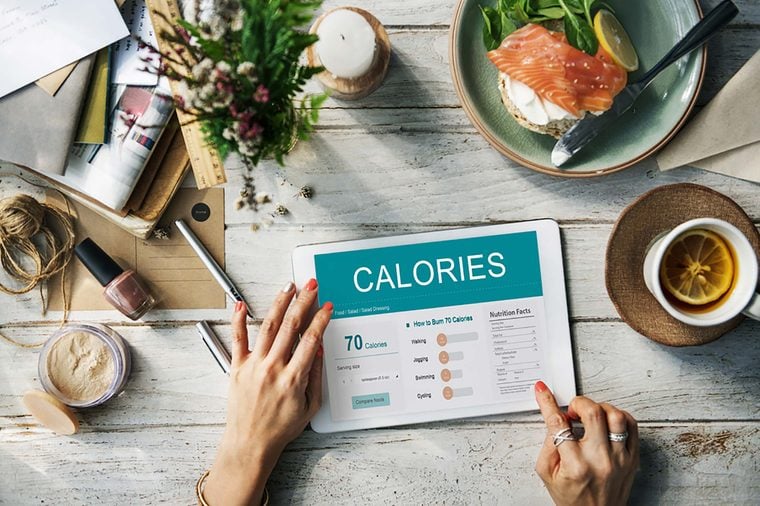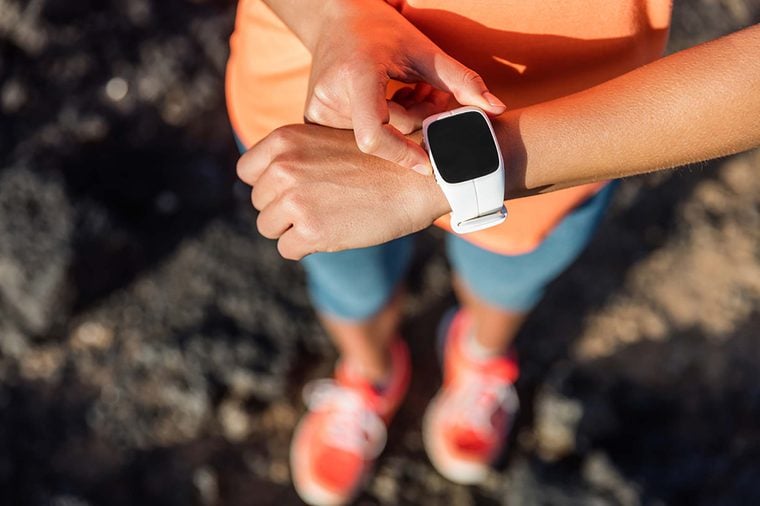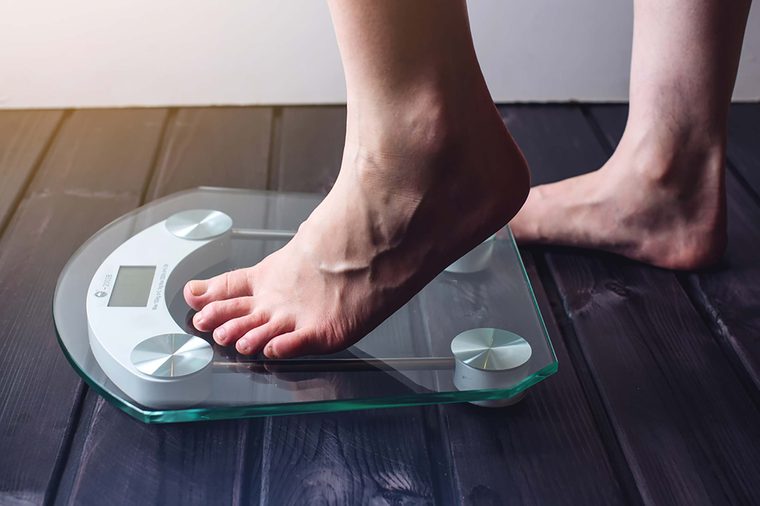Mihail Fedorenko/Shutterstock
Keep track of what you eat
In the beginning, it is important to keep some type of food journal, says Grace Derocha, RD and certified health coach at Blue Cross Blue Shield of Michigan. “But you have to be honest and measure food portions to get a realistic picture of how much you are consuming.” A food diary can help reveal eating patterns, such as timing, the kinds of foods being consumed, and hunger triggers. “For example, someone who snacks every day around 3 p.m. might discover they are only eating out of habit or boredom,” says Derocha. “Food diaries can also uncover unhealthy eating habits like the consumption of too many calories at particular meal times.” Mobile apps such as LoseIt and MyFitnessPal can help keep tabs on how much you consume because they track calories for a variety of foods (even restaurant meals), let you scan barcodes from packages, allow you to add your own recipes, and even sync with fitness trackers, but their use can become cumbersome. “Put a time limit on your calorie tracking—about three days—and look for a pattern,” says Scritchfield. “If you see that you are under-eating early in the day, try to eat more for breakfast, which will help eliminate overeating at dinner. And always ask yourself: ‘Is this activity helping me?’ If calorie counting is stressing you out, it is not helping.” Here’s how you can put a stop to those late-night munch fests.
Assess your activity level
While it’s crucial to keep track of calories if you want to lose weight, knowing your daily activity level can also be eye-opening, says Derocha. “Most Americans sit about nine hours per day, which is even more than we sleep.” Fitness trackers and simple pedometers can help assess the number of steps you take as well as monitor your heart rate. Adding cardiovascular exercise and weight training is important because it burns calories and increases your metabolic rate, which helps with weight loss, says Angel Planells, RD, spokesperson for the Academy of Nutrition and Dietetics. Yet, increasing your activity does not necessarily mean you have to hit the gym. “Some people see exercise as a chore,” says Planells. “If that’s the case, find an activity that is fun—go for a hike with the family or go for a walk in the park.” Learn the exact number of calories in a pound.
Artem Oleshko/Shutterstock
Set a realistic weight loss goal
Forget about your dream weight, says Planells, it is better to set smaller, realistic goals. “The best and most sensible goal for weight loss is 10 percent of your body weight—if you weigh 200 pounds, you have 20 pounds to lose.” When we go for the dream weight, such as trying to get back to what you weighed in college, we set ourselves up for failure, he explains. “Weight loss is a marathon, not a sprint if we want to be in it for the long term—it might take three months to a year to lose that 10 percent.” After you lose the weight, you can reassess, decide if you feel up for losing more, and then set a new goal. “Just be sure to set goals that are SMART (specific, measurable, attainable/adjustable, realistic, and trackable/timely),” says Derocha. It’s important to reassess and adjust goals throughout the process to allow for setbacks. Results take time and are dependent on your starting weight and muscle mass, so while some people can see results within one week, others may not see results for a couple of months, she explains. “Stick to a healthy diet, continue with regular physical activity, and be patient!” (Psst…If you want to stay looking and feeling young, avoid these foods that age you.)






























